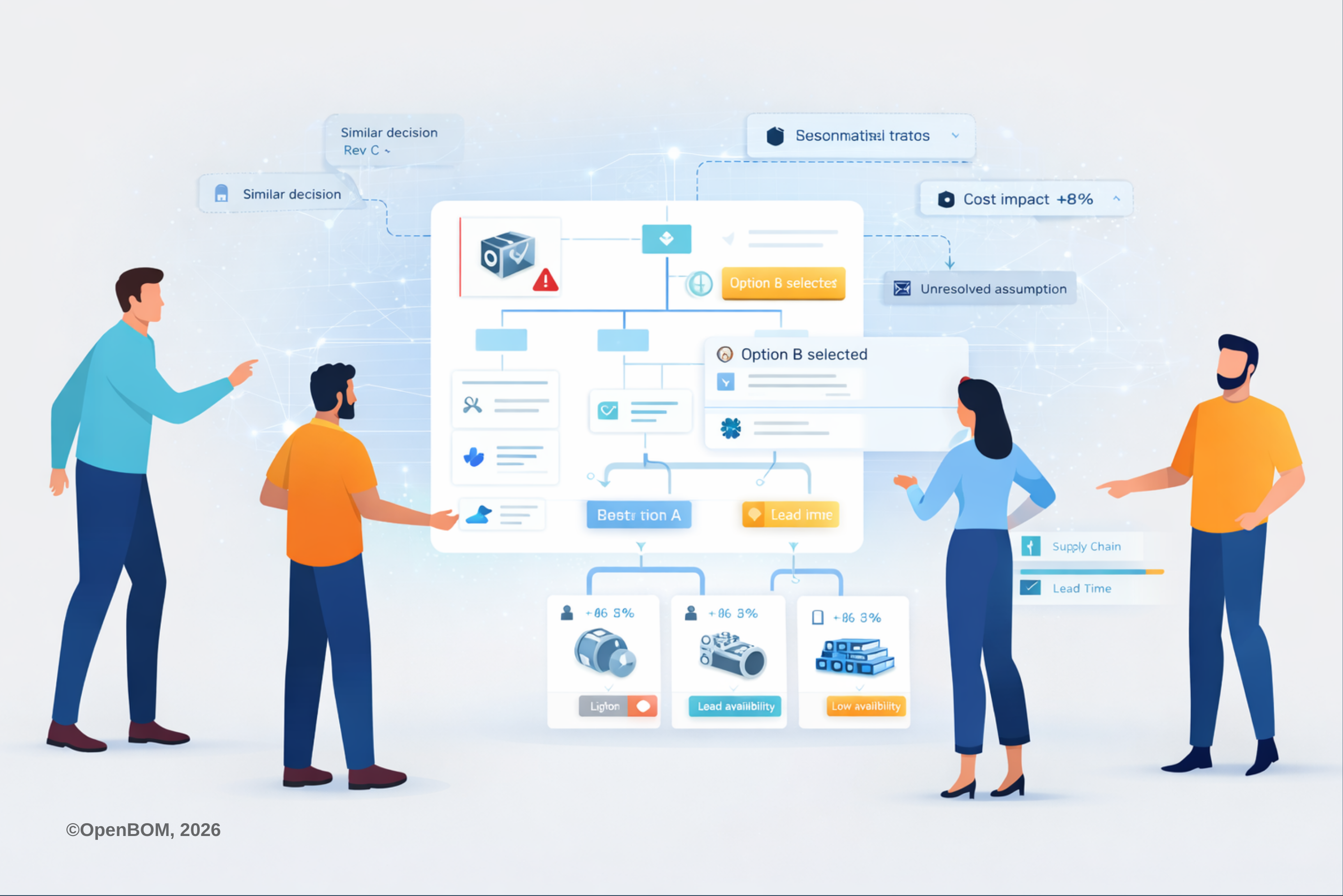
Culture eats strategy for breakfast, technology for lunch, and stays hungry for dinner. The manufacturing industry is getting more complex, new technologies are introduced, and companies are becoming more distributed, but one thing remains unchanged – the importance of people to make systems and technology work.
PLM Technology and Human Impact
I want to give the credit to the title of this blog to Rob Ferrone who discussed with me the impact of technologies on human communication and came up with the word “BOMversation”. When we started OpenBOM, one of the fundamental ideas was to simplify communication between people. Here are the four top reasons why we’ve seen communication is not doing well in engineering and manufacturing teams:
- The complexity of data, discipline, and engineering teams involved
- Distribution of work and locations in a modern manufacturing
- Reliance on documents paradigm (working with file/folders)
- Multiple systems disconnected
Therefore, the main idea of OpenBOM was to fix the pain of communication between people and make data easily available and instantly shareable. The idea of Google Spreadsheets on steroids to understand a BOM was the one that later became a fundamental element of OpenBOM Patented BOM collaboration methods.
Working with many companies, we learned that helping people connect in the context of data can help to establish a trusted environment where companies can develop new products faster without mistakes. This is now a foundation for the Agile New Product Development approach OpenBOM recommends to all our customers.
So, what is BOMversation?
Bill of Materials (or product data) is a lifeblood of any engineering and manufacturing organization, It is a foundation of the information model that a company needs to have to perform product development, manufacturing planning, supply chain, and later maintenance and support. Therefore, we believe in building a robust digital product model as a foundation of information streams.
The data model itself is not enough. The complexity and robustness of data models usually make it difficult for users to understand and operate the system. That is the problem of many existing PLM systems and what is wrong with them. By exposing a huge amount of data details, these legacy “PLM editors” kill user experience and make people reject these systems. The outcome – export data to Excel from PLM systems as soon as possible and provide “Excel” as a collaborative model. Which is fundamentally a collaboration killer.
What we did at OpenBOM is take the existing paradigm of collaborative spreadsheets in Google Sheets that is so loved by many users and re-use it to support collaborative environments and user experience with rich graph-based product models in OpenBOM. Users can enjoy seamless collaboration, but in fact, the data is instantly retrieved from complex database structures.
Conclusion:
It is absolutely critical to include users in the process of PLM technology adoption. Without that, any technology will die. People collaboration is one of the most critical elements of engineering and manufacturing activity.
Therefore, at OpenBOM, we create a technology that simplifies collaboration by introducing an easy and seamless data sharing mechanism “a-la Google Sheets” that allows us to visualize and edit data. Combined with a flexible data model and powerful user-defined views, OpenBOM technology allows you to create powerful BOMVersations between different people, teams, and organizations.
REGISTER FOR FREE and check how OpenBOM can help.
Best, Oleg
Join our newsletter to receive a weekly portion of news, articles, and tips about OpenBOM and our community.










